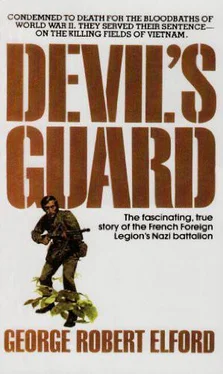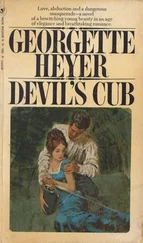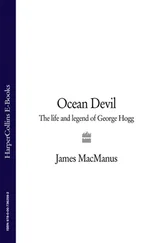Some data from my own experience in Indochina: The majority of all booby traps set by the Viet Minh were manufactured and planted by noncombatants. Concealed weapons and bombs were transported by women, children, and elderly persons. Punji stakes, poisoned arrows, and spear guns were manufactured exclusively by noncombatants, often young children. Such weapons claimed over two thousand French lives during my service in Indochina.
Lookout, reconnaissance, liaison, and similar services of the Viet Minh were manned almost entirely by children, based on the assumption that army patrols seldom pay any attention to kids playing in a pond or passing through a field, while adult males would certainly be stopped, searched, and questioned.
1949 Karl Pfirstenhammer captured a group of fifteen women (many of them elderly) and twenty children (some of them not yet ten years old) while they were engaged in the “peaceful activity” of planting punji traps and crudely made bombs along a regular army trail. These “noncombatants” were transported into Camps of Regroupement near Saigon.
An army surgeon and four medics, among them a French nurse from Rouen, had been lured into a “friendly” village by a “bereaved mother” to attend “a seriously ill child.”
The ambulance was ambushed by the Viet Minh. Its occupants were brutally murdered. The terrorists then made off with a quantity of surgical equipment and medicines.
Seven drugged Legionnaires were garrotted in a Hanoi public house by Viet Minh terrorists.
1950 An old woman street peddler sold a dozen poisoned pineapple sticks to members of a passing platoon. Five Legionnaires died and several more had to be hospitalized. The woman was recognized and arrested a couple of months later, but the subsequent military tribunal dismissed her case for “lack of evidence.”
A few weeks after her release the “witch of Ap Thui Loc” managed to murder a lieutenant of the Paratroops with poisoned squash made of crushed sugar cane. Apprehended by the Paras she was taken to the woods and summarily executed.
A fifteen-year-old girl appeared “responsive” to the friendly approach of a young corporal who encountered her in a Hanoi market and offered to help with her bags and boxes. After a few rendezvous the girl invited the corporal home to meet her family. He accompanied her into a dark side street where two of the girl’s brothers waited in ambush. Stabbed to death, the corporal’s body was dumped in front of the local police station carrying a placard: “This is only one colonialist dog but many more will follow.”
A twelve-year-old boy peddler sold an antique Japanese sword to an air force captain. When, back at his quarters the captain showed the weapon to members of his family, the booby-trapped bottom of the hilt exploded, severely wounding him, his wife, and their seven-year-old son.
1951 A North African platoon encountered a group of women distilling syrup from sugar cane. Asking for directions, the platoon was sent off on a treacherous trail ending in a swamp. Nine soldiers choked to death; others still struggling were pushed under by “innocent noncombatants” using long bamboo poles.
Two ten-year-old boys were caught by Rudolf Krebirz carrying a bagful of written information on French motorized transports and troop deployments around the Chinese frontier near Cao Bang.
1952 A young boy shot and killed two Legionnaires in Lao Kay, using a crude spear gun similar in principle to those used by scuba divers. A fifteen-year-old lad slipped a venomous snake into the vehicle of a French colonel. Both the colonel and his aide were bitten by the reptile but survived because of timely treatment. Caught while trying to flee, the young culprit was clubbed to death by Moroccan tirailleurs before the military police could intervene.
The murderous activities of such “innocent noncombatants” could be cited over and over, but those who have not been actually on the spot would never comprehend them. European or American women, for instance, have simply no conception that their Asiatic counterparts can spray machine gun bullets as freely as other women use hair spray before an evening out, and that children over there are not playing with plastic Roy Rogers guns but with plastic high explosives, destroying life and property as freely as American kids might destroy sand castles.
A convoy of carts loaded with pots, pans, homemade furniture, rice, fruits, and vegetables is heading for the markets of Hanoi. Some of the carts are driven by aged peasants with suntanned, wrinkled faces and white beards commanding respect; other vehicles are occupied by entire families. The convoy has come a long way and has already passed two army roadblocks. It travels within a “pacified” area controlled by the gendarmes, where we have no jurisdiction whatsoever.
We were resting in the riverside meadow to pass the hottest hours of the day. The shady trees offered some relief from the burning heat. The convoy of carts rolled in. While the drivers watered the animals, the families descended; the women began to kindle fires and the children took to the canal. Accompanied by Schulze and Krebitz, I strolled over to the convoy and asked to see their leader. He turned out to be a mild-looking, bespectacled, middle-aged man with a gentle smile on his bearded face.
“We have a laissez-passer from the army,” he said with some irritation in his voice. He showed me the document which permitted the convoy to proceed to Hanoi. “Checked and allowed to proceed,” a pink rubber stamp read. “Examined and cleared.”
Having nothing else to do, I decided to check them once more. Sergeant Krebitz assigned four men to each cart, an act which drew vehement protests from the convoy leader.
“Make sure that nothing is damaged,” I told Sergeant Krebitz, who replied with a grin, “We will handle their grenades as if they were Easter eggs.”
“We carry no grenades,” the convoy leader protested.
“Then why worry?” Schulze shrugged. “We will have a quick little look about, then you proceed.”
“You have no right to do that.”
“Indochina is a lawless country.”
“I know that,” the man blurted, his face red with impotent rage. “We want to move on.”
“You have just stopped to have a rest… Relax.”
“I am going to hand a petition to your superior.”
“You do that. His name is Colonel Simon Houssong and you will find him at Viet Tri. I am First Lieutenant Hans Wagemueller. And now, if you don’t mind, please tell your people to descend.”
“You have no right to—”
“I have heard that before.”
I cut him short and ordered my men to proceed.
The specialists of Gruppe Drei knew well where to look for possible contraband and soon I heard a telltale “My God” as one of the troopers hauled a large watermelon from a cart and dumped it on the ground with the comment, “Is it ever heavy!” With an enigmatic smile on his face, Xuey stepped forward to have a look; the next instant a couple of travelers bolted for the woods.
“Hold them!” Riedl shouted, but it was too late for us to stop the fugitives and we could not open fire amidst the milling throng of civilians. The trio vanished from sight.
“Now how about this little interlude?” I said to the convoy leader.
“How about this little too-heavy watermelon here?” Sergeant Krebitz intoned. “The one who eats it will get chronic indigestion.”
Leaving the bearded leader under armed guard, I walked over to look at the melon. It was hollow. In the hollow we found an oilcloth package containing a revolver, fifty cartridges, and six hand grenades.
The search continued. Hollow vegetables contained more grenades. Time bombs with corrosion fuses were camouflaged as cabbages; dismantled rifles and a submachine gun were among our haul. Eighteen carts which transported no illegal cargo were allowed to proceed. The rest of the convoy went back to the army checkpoint under armed escort.
Читать дальше












